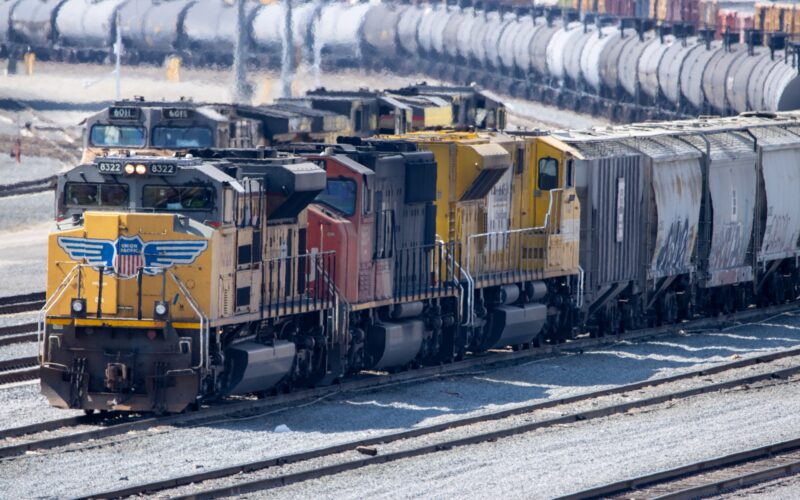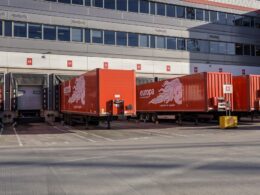Dealing with logistics is by no means easy. Apart from everyday troubles and issues, which are rarely easy to handle, you have large-scale challenges you need to face. So, to make things a bit easier, we will cover the most common logistics challenges in 2022 and hopefully, give you an idea of what’s at stake.
Notable logistics challenges in 2022
Seeing that the world is only becoming more connected, there is hardly an industry out there that isn’t related to logistics. Now, more than ever, we have companies that provide global shipping. Apart from that, companies find partners all around the world. And it is the effectiveness of shipping companies that makes their partnerships feasible. Also, keep in mind that, apart from emerging and ongoing industries, you have new trends in supply chain management, wars, epidemics, and political changes all playing a role. Therefore, you’d likely find yourself overwhelmed when trying to condense what the logistics industry is like in 2022. Nevertheless, we’ve gone through all the relevant data to give you a concise overview of what to expect in this quite turbulent year.
Supply chain disruption
When COVID-19 hit in 2020, we all knew there would be supply chain disruptions. After all, significant events like epidemics tend to wreak havoc on supply chains, regardless of how strong they previously were. But, few expect there will still be COVID-19-related supply chain disruptions in 2022. Unfortunately, certain supply chains haven’t yet recovered as plenty of small-scale shipping companies had to close down. According to triple7movers.com, some companies manage to keep their services available. But others weren’t so lucky. Until these companies reopen or are replaced by other companies, supply chains will not be as strong as they once were. Hopefully, we’ve learned our lessons. And, with luck, we won’t have any new disruptions caused by COVID-19, or any other virus, in the future. But, as it is now, you must carefully study the supply chain you plan to use. Specific links of it may not have yet recovered from the pandemic.
Labour shortage
As is usually the case, downsizing within a company usually results in layoffs and cutbacks. Unfortunately, the shipping industry is no expectation. And considering the aforementioned COVID-19 pandemic and its effects, it shouldn’t be a surprise that there is labor storage going on. Almost every aspect of the supply chain, including:
- Warehouse workers
- Long-haul truckers
- Last-mile delivery personnel
All lack trained, motivated people. And seeing that the shipping industry isn’t recovering as fast as we’d hoped, they aren’t likely to find the money to hire them soon. Keep in mind that the “Great resignation” also has a tremendous effect on the shipping industry. After all, most U.S. workers aren’t willing to work for what the companies are offering.
Industrial storage capacity
One of the effects of COVID-19 was that U.S. companies sought to move their enterprises back to the U.S. Since international shipping slowed down to a crawl, it soon became apparent that a lot of cost-effective supply chains suddenly became a waste of resources. So, to make ends meet, companies had to move their entire enterprise to U.S. soil. That way, they could at least provide an efficient shipping service, although at a lower capacity.
This sudden return of shipping companies has led to a lower industrial storage capacity. While before the available storage space in the U.S. could meet the local logistic needs, this is not the case anymore. If businesses want to expand, they first need to start looking for available industrial storage space since there isn’t as much available as it was a year or two ago.
Increased automation
The development of automation is going to be one of the biggest hurdles that the logistics and shipping industry needs to overcome. On the one hand, automation makes many shipping problems much easier to handle. Things like:
- Warehouse drones and robots
- WMS
- AI logistics systems
- Guided and automated vehicles
- Augmented reality aids
All these make managing and tackling logistics much more straightforward. They reduce mistakes, streamline the shipping process, and give employees information that was never possible before. Modern AI shows tremendous stride in logistics as the supply chains it creates are stronger, more efficient, and better updated than ever before.
On the other hand, the increase in automation inevitably leads to a lack of job availability and an increase in industry standards. After all, the more efficient your competition is, the more you have to be. As it is now, warehouse solutions are a multibillion-dollar industry. Seemingly small advancements in the industry can easily lead to robust changes. So, the sooner you start researching and investing in automation, the better.
War in Ukraine
While we thought that the COVID-19 was the last, large cause of disruption within the logistics industry, the war in Ukraine showed its ugly face. The sanctions imposed on Russia limit the shipping potential of a lot of companies. After all, Russia was a big market. Big companies like:
- Mitsubishi
- Nestle
- Shell
All of them stand to lose billions due to Russian sanctions. And those billions lost have a ripple effect on the shipping industry. Not to mention that a lot of supply chains went through or at least used Russia and Ukraine as a part of their shipping plan. This, at least for now, is no longer possible.
Final thoughts
When considering logistics challenges in 2022, it is crucial not to lose your head. As you can see, countless factors impact the logistics industry and therefore bring challenges you are likely to face. So, if you wish to future-proof your supply chain, try to start small. Focus on what stands to affect you most and research that aspect as much as possible. Deep research is the only way to find solutions for logistic challenges.













